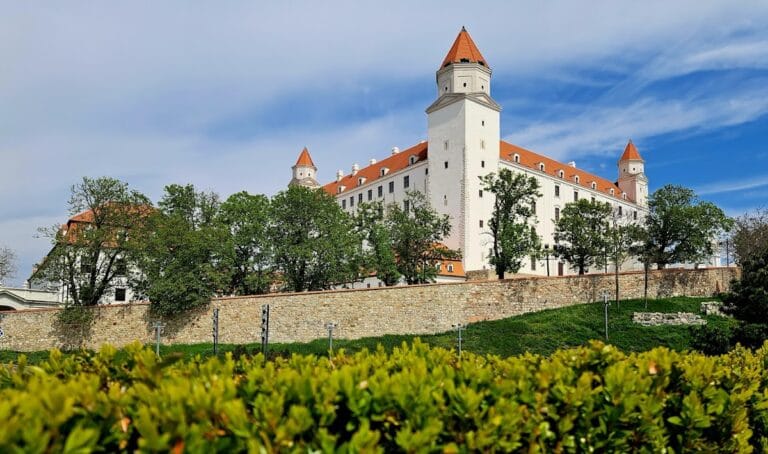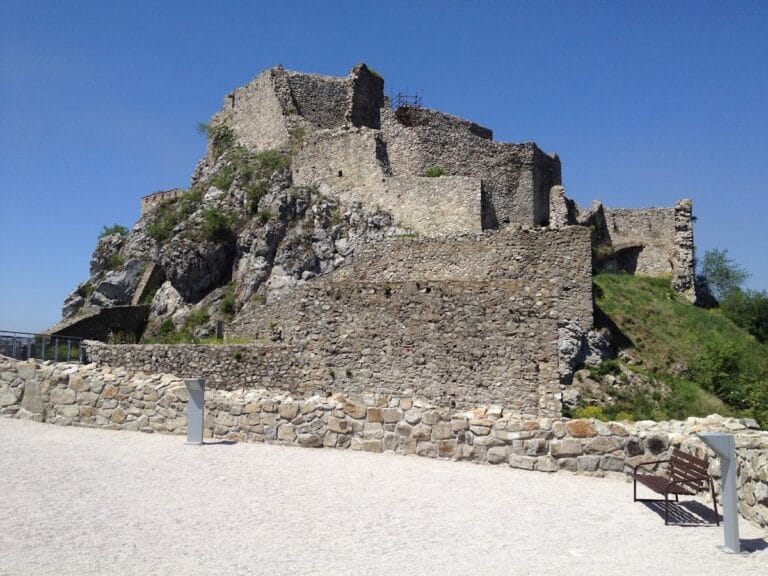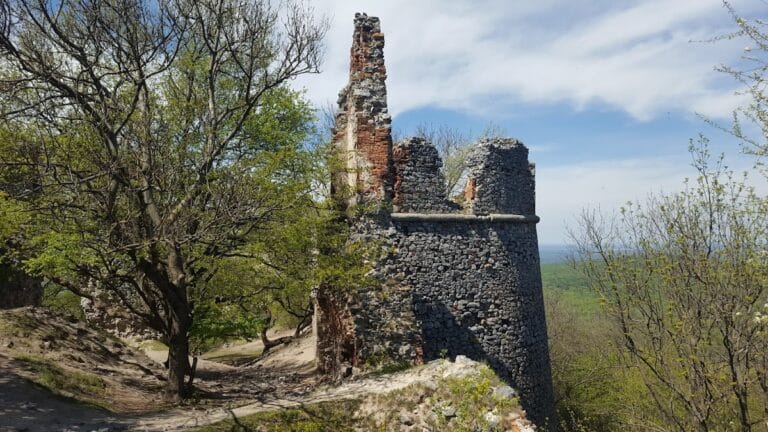Pottenburg Castle: A Medieval Border Fortress in Austria
Visitor Information
Google Rating: 4.7
Popularity: Very Low
Google Maps: View on Google Maps
Country: Austria
Civilization: Unclassified
Remains: Military
History
Pottenburg is a medieval border castle situated in the municipality of Wolfsthal, Austria. Built by late medieval European civilization, it guarded strategic routes near the present-day Austrian-Slovak border and secured the entrance to the Hainburger Pforte, a key passage through the Lower Carpathians.
The origins of Pottenburg are debated among historians. Some accounts suggest that fortifications existed at the site as early as 990 to 1025, a period marked by invasions from the Hungarians. During this time, the castle’s first known owner was Count Poto, son of Count Palatine Hartwig of Regensburg. However, other researchers date the foundation more securely to the early 13th century, with the castle entering written records only by 1256.
Following its early period, Pottenburg changed ownership multiple times. After Count Poto lost control due to a rebellion in 1054, the castle passed to the Bishop of Eichstätt. By the early 12th century, a member of the Asparn family held possession, but after their line ended, the castle became a fief under ducal authority in 1226, given to Heinrich von Brunn. The estate remained politically and militarily significant as power shifted, often near the borderlands, including spells under Hungarian dominion.
During the mid-14th century, Count Konrad von Schaunberg acquired Pottenburg in 1343 but relinquished it back to his ruler by 1351. The castle underwent substantial rebuilding efforts in 1359 and again in 1437. Military tension rang out in 1460 when imperial forces ousted Gamareth Fronauer, who had refused to hand over the stronghold.
In 1482, King Matthias Corvinus of Hungary seized Pottenburg, controlling it for a decade to strengthen Hungary’s border defenses against Austria. Upon retaking the castle, it was overseen by a ducal steward but fell out of military use around 1500 as fortress functions declined.
The castle was sold in 1517 by Emperor Maximilian I to Wilhelm II of Zelking. In the first Turkish invasion of 1529, Pottenburg fell with minimal resistance, after which it was left to decay. Ownership passed from the Zelking family to the Counts of Walterskirchen in 1544, who retained possession into modern times. The castle thus transitioned from an active border fortress to a noble estate marked by ruin.
Throughout its history, Pottenburg’s multiple names—Hasenburg and Mädchenburg—reflect local traditions and the changes in its role and ownership. The castle was closely tied to the now-lost settlement of Amberg below it, indicating the strong interdependence of fortress and village life in the medieval period.
Remains
Pottenburg occupies a quadrangular plateau on a rocky spur near the summit of Königswarte hill, commanding views over the surrounding terrain. The castle complex is structured around a square inner bailey, which formed the heart of fortified life. A northern outer bailey, functioning as an economic courtyard, and a northwestern outwork extend the defensive layout. Surrounding the entire site are earthworks and stone fortifications, including ditches carved into the ground on the northwest, east, and southern sides, with a central rampart providing enhanced protection to the south.
The outer defensive wall, dating from the mid-13th century, is constructed primarily from rubble stone. Visible traces include beam holes that once supported a battlement walkway, alongside projecting corbels that held defensive turrets and latrines. A semicircular tower on the eastern flank, likely added around 1500, further strengthened this line of defense. Entry to the outer bailey is gained through a Gothic-style portal composed of squared stone blocks. Access passes through a depressed round arch via the northwestern outwork, leading into an area where remains of a residential building are found. This building includes a courtyard with a well and shows indications of construction from the 1437 rebuilding phase.
The castle’s dominant feature within the inner bailey is the bergfried, a tall keep measuring approximately 26.5 meters in height and encompassing six stories. Built in the second quarter to mid-13th century, it stands on walls about 3.5 meters thick, made of rubble stone faced by carefully shaped corner stones to reinforce the structure’s strength. Narrow arrow slits set in funnel-shaped recesses provided archers with defensive positions, while the bergfried’s upper platform was once surrounded by corbels and decorative gargoyles, marking where defenders could stand and observe the surroundings. Access was gained via an elevated doorway on the east side. Inside, the lower levels feature robust ribbed vaults supporting the upper floors, with staircases ingeniously built into the thick wall where space was limited.
East of the bergfried lie the remains of the palas, or main living quarters, which may have also functioned as a chapel. Noteworthy is the west wall, where an elevated doorway aligns in height with the bergfried’s entrance, indicating there may have been a connecting bridge between these two prominent buildings. Below this entrance is a pointed arch portal, a characteristic medieval architectural feature.
Pottenburg’s location near the Königswarte lookout tower places it within a landscape rich in natural as well as historical interest, as local traditions note the surrounding game reserve inhabited by wild boars. Together, these archaeological elements offer a glimpse into the castle’s role as a fortified residence and military stronghold guarding important borderlands centuries ago.










